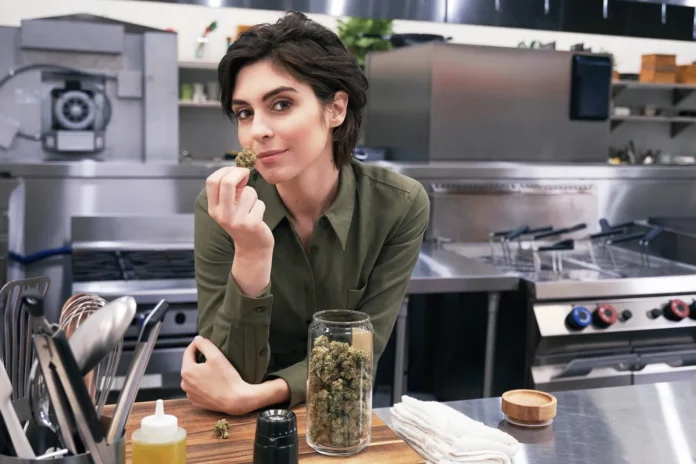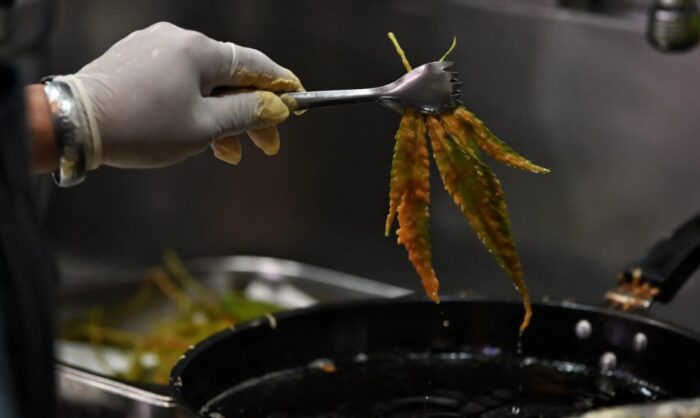
The culinary world continually evolves, embracing diverse ingredients to create innovative and exciting dishes. Among these, cannabis has emerged as a unique ingredient, offering a blend of flavor and experience unlike any other. Cooking with cannabis is not just about the psychoactive effects; it’s about exploring new culinary frontiers.
This guide delves into the art of using cannabis in the kitchen, providing a comprehensive understanding of how to incorporate this versatile herb into various recipes.
Understanding Cannabis in Culinary Use
In culinary contexts, cannabis isn’t just a recreational substance but a complex ingredient offering unique flavors and effects. Its key components, THC and CBD, play distinct roles: THC is known for its psychoactive effects, adding a sensory dimension to dishes, while CBD, devoid of these effects, is prized for its potential therapeutic benefits.
Cooking with cannabis involves more than just adding it to dishes; it requires an understanding of how its flavors and cannabinoids interact with other ingredients and how they can be effectively and safely incorporated into various culinary creations.
Decarboxylation ─ Unlocking the Potency of Cannabis
Decarboxylation is a critical process in cannabis cooking and is essential for activating its cannabinoids. This process converts THCA and CBDA, the non-psychoactive acidic forms of THC and CBD found in raw cannabis, into their active states.
By gently heating cannabis in an oven, decarboxylation ensures that these compounds can exert their full effects when consumed. This step is crucial for achieving the desired potency and effectiveness in cannabis-infused dishes, making it a foundational technique in cannabis culinary arts.
Infusing Cannabis into Cooking
Infusing cannabis into cooking oils and fats unlocks its potential in the culinary world. This method involves steeping cannabis in substances like butter or oil, allowing the fat to absorb the cannabinoids. This technique creates a versatile base, commonly referred to as cannabutter or cannabis-infused oil, which can be used in a multitude of recipes, from baked goods to savory dishes.
The key to successful infusion is maintaining a balance between temperature and time, ensuring that the cannabinoids are effectively extracted without degrading their potency.
The Art of Balancing Flavors

Mastering the art of cooking with cannabis involves more than understanding its effects; it’s about integrating its distinct, earthy flavor into dishes. This unique taste, ranging from nutty and herbal to citrusy and pine-like, varies significantly across different strains.
The challenge and creativity lie in harmonizing this flavor with other ingredients, ensuring it complements rather than overwhelms the dish. This requires thoughtful experimentation with various strains, each bringing its unique flavor profile, to find the perfect match for each culinary creation.
Cannabis in Savory Dishes
Incorporating cannabis into savory dishes opens up a realm of culinary creativity. This versatile herb can transform the ordinary into the extraordinary, from enhancing pasta sauces to giving marinades an unexpected twist. The key to success is understanding how to integrate cannabis without compromising the dish’s overall flavor and potency.
Careful attention to cooking temperatures is crucial, as high heat can degrade THC, the psychoactive component in cannabis, thereby reducing its desired effects. Skillfully used, cannabis can add depth and complexity to a wide range of savory dishes.
Weed Smell on Clothes ─ A Telltale Sign of Culinary Experimentation

One common issue faced by cannabis cooks is the lingering weed smell on clothes. This odor is a small price to pay for the culinary creativity unleashed in the kitchen. To mitigate this, ensure good cooking ventilation and consider wearing an apron or clothes designated for cannabis culinary sessions.
Additionally, wearing specific clothing, like an apron, during cooking sessions can help. These clothes can be washed separately to avoid transferring the smell to other garments, ensuring the aroma is confined to the kitchen.
Sweet Treats and Cannabis
Introducing cannabis into baking elevates conventional sweet treats to a new level of gourmet experience. Infusing desserts like cookies and brownies with cannabis involves more than just adding it as an ingredient; it starts with creating a well-balanced cannabis-infused fat, such as cannabutter. This ensures that THC and CBD are evenly distributed throughout the treat, offering a consistent and enjoyable experience.
The infusion not only adds a unique twist to the flavor profile but also introduces the effects of cannabis in a palatable and delightful form.
Dosage Control and Safety
Dosage control is crucial in the culinary use of cannabis to ensure a safe and enjoyable experience. Beginners should start with small quantities of cannabis to gauge its effects, as edibles can produce more intense and prolonged experiences compared to other consumption methods.
Precise measurement and consistent mixing are essential to avoid uneven distribution of cannabis in the dish. It’s also imperative to clearly label cannabis-infused foods to prevent accidental consumption and to store them securely away from children and pets, prioritizing safety in every step of cannabis culinary exploration.

Conclusion
The exploration of cannabis in the kitchen is an exciting culinary adventure. The right knowledge and approach can add a unique dimension to cooking. Remember to respect the potency of cannabis, balance its flavors with other ingredients, and, most importantly, enjoy the creative process of crafting cannabis-infused culinary delights.
As the acceptance and legal status of cannabis continue to evolve, so too will the opportunities to experiment with it in the kitchen, making every meal an adventure in itself.








